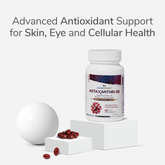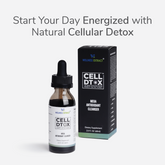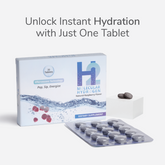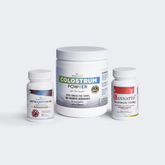Estimated Reading Time: 5 minutes
|Do you know the main ingredient that is found in your moisturizer, your serum, your sheet mask, and even lip balms? It is the secret behind that hydration in your skin.
Yes, we are talking about hyaluronic acid. It sounds a little scientific but somehow, it’s known as the holy grail for hydration in skincare.
But did you ever pause during your skincare routine and wonder if it is actually making a difference? Or is it just one of those trendy ingredients with a lot of hype?
Let’s break down the real science behind hyaluronic acid, what it is and how it works.

What is Hyaluronic Acid?
Hyaluronic acid or HA, recognized as skincare-essential is not some harsh chemical, it’s actually something your body already builds inside. It is a sugar molecule found naturally in your skin, eyes, and joints.
And the purpose? To hold onto the water deep within your skin.
Imagine it as a tiny sponge that can hold up to 1000 times the weight of moisture. That’s why it’s so essential in skincare. With the right amount of application, it can make your skin look smoother and more hydrated.
But here’s the twist: not all hyaluronic acid is created equal. The result of hyaluronic acid depends a lot on your skin type, the climate, and how you do your skincare.
Does Hyaluronic Acid Actually Hydrate Your Skin?
Surprisingly, Hyaluronic acid doesn’t add moisture to the skin, it holds on to the moisture that is already there.
Is your skin dry and there’s no humidity in the environment? It might not be the work the way it should. In fact, in dry weather, it can pull moisture from deeper layers of your skin which can sometimes backfire and make your skin feel tighter or dehydrated.
That’s why, it’s crucial to understand how you use it.
-
You need to apply it on damp skin (not dry skin)
-
Seal it in with a moisturizer to lock in hydration
Types of Hyaluronic Acid
You must have seen “low molecular weight” or “multi-molecular” on skincare labels, but what does that even mean?
All hyaluronic acids are not the same, it’s all about how deep the ingredient can go in your skin. Here are the different kinds of hyaluronic acids to look for:
-
High Molecular Weight Hyaluronic Acid
This one has bigger molecules, so it sits on the surface of your skin. It helps to give you that instant hydrating, smooth, dewy look, but the effect is temporary.
-
Low Molecular Weight Hyaluronic Acid
These smaller molecules can go a bit deeper for long-lasting hydration. They can be a little irritating for sensitive skin, if overused.
-
Multi-Molecular Hyaluronic Acid
Some products combine both high and low molecular weight for surface-level glow and deep hydration. These are the most effective ones but also a little pricier.
Top 5 Common Mistakes To Avoid
Even though hyaluronic acid is loved by many, a lot of people unknowingly misuse it and then wonder why their skin feels dry or tighter. Let’s break down the most common slip-ups:
-
Applying it on dry skin
-
Skipping moisturizer afterwards
-
Using it in extremely dry climate
-
Overusing it
-
Expecting instant results
How To Use Hyaluronic Acid The Right Way?
Here is a step-by-step guide on how to use hyaluronic acid the right way:
-
Cleanse your face
Firstly, wash your face with a gentle cleanser that won’t completely dry your skin. Apply hyaluronic acid while your skin is still damp, leaving moisture to soak in.
-
Use just a few drops
The right amount of concentration is also an essential aspect of it. You don’t need a spoonful, just 2-3 drops of hyaluronic acid for your entire face. Excessive amounts of products can make your face sticky.
-
Follow up a moisturizer
Now, you need to seal it with a good moisturizer or face oil to lock in hydration and prevent hyaluronic acid from pulling it out from your skin layers.
-
Apply SPF (If daytime)
Just like other skin ingredients, hyaluronic acid works best when your skin layer is protected. Remember to apply a top layer of sunscreen (SPF) in the morning and you’re all set.
Pro Tip: Use it twice a day for the best results but if you have dry skin or live in a humid climate, consider layering it with a hydrating toner.
Hyaluronic Acid V/S Other Ingredients
|
Ingredient |
Pros |
|
Hyaluronic Acid |
Lightweight, fast-absorbing and suitable for all skin types |
|
Glycerin |
Inexpensive, non-comedogenic and stable in formulations |
|
Sodium PCA |
Gentle, non-irritating and boosts skin’s natural moisturization |
|
Squalane |
Mimics skin’s natural oils, non-greasy, suitable for dry skin |
|
Polyglutamic Acid |
Hydrating, helps lock in HA and improves skin texture |
|
Aloe Vera |
Anti-inflammatory, calming and natural |
|
Ceramides |
Great for dry/acne-prone skin, improve hydration |
Final Takeaways
Hyaluronic acid isn’t just hype; it can actually help your skin stay plump, smooth, and hydrated. Just like any other skincare ingredients, it’s not a miracle. It works best when used correctly with the right amount of concentration.
Consistency matters a lot. You might be able to see an instant glow, but lasting results appear with regular use and right layering.
That being said, it’s not for everyone. If you have extremely sensitive skin or live in very dry conditions, you might want to do a patch test or consult a dermatologist before using it.
Bottom line? Hyaluronic acid is a great addition in your skincare routine, but it is not a replacement for your moisturizer. It could help lock in the hydration your skin craves.
Disclaimer: This blog is intended for informative purposes only and should not be considered medical advice. The content does not make any claims regarding the prevention, cure, diagnosis, or treatment of any health condition. Always consult your healthcare provider before adding anything to your healthcare routine.
Frequently Asked Questions
Q1. Does hyaluronic acid darken skin?
No, hyaluronic acid does not darken the skin. In fact, it is a hydrating agent that helps plump your skin and gives it a shine from within. However, if you use it in a dry climate without adding a layer of moisturizer, it can draw moisture from your skin causing dryness or dullness.
Q2. What are hyaluronic serum side effects?
Hyaluronic acid is generally safe, but possible side effects may include:
- Redness or irritation (if you have a sensitive skin)
-
Breakouts in acne-prone skin, if it is too heavy
-
Dryness or tightness if used without a moisturizer in dry climate
Q3. When to apply hyaluronic acid in skincare routine?
Apply hyaluronic acid after cleansing and before moisturizing. Here's a basic skincare routine:
-
Cleanser
-
Toner (if used)
-
Hyaluronic acid serum
-
Moisturizer
-
Sunscreen
Q4. Which is the best hyaluronic acid in skincare routine?
The best hyaluronic acid serum depends on your skin type and formulation quality. You can look for multi-molecular weight hyaluronic acid, fragrance-free and alcohol-free formulas along with added ingredients like Vitamin B5, ceramides, peptides or niacinamide.
Q5. Should I use hyaluronic acid at night or in the morning?
You can use hyaluronic acid both morning and night. It’s safe and effective because it hydrates and supports skin barrier repair throughout the day and night.






































